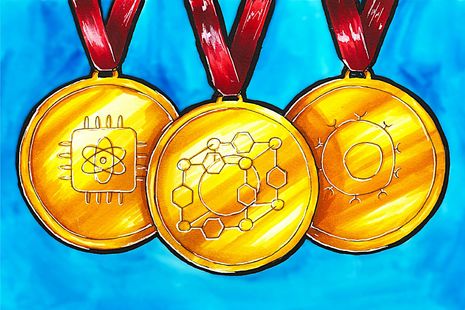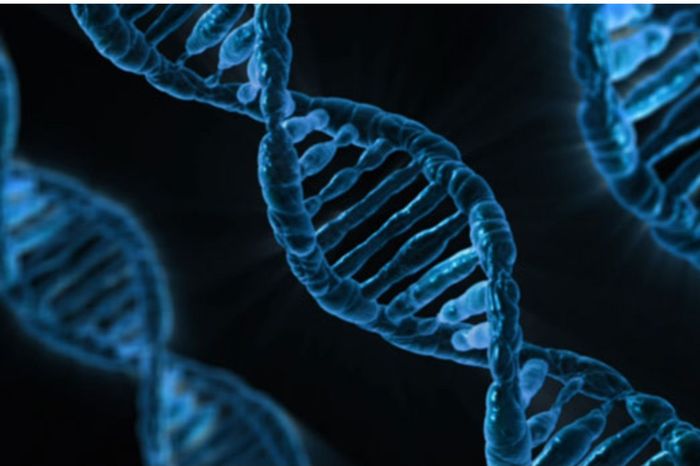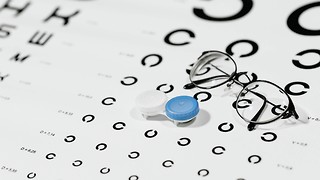2025’s scientific Nobel prizes: from quantum computing to discovering cells
Anika Pai gives the rundown on the latest Nobel Prizes awarded in physics, chemistry and medicine or pharmacology

Between the 6th and 8th of October, Nobel Prizes were awarded to three scientists in each of the categories of Physics, Chemistry, and Physiology or Medicine. The awards recognise research decades in the making, with discoveries spanning from 1985 to 2003. These breakthroughs brought about significant shifts in their respective fields, shaping our understanding of the world today. They also underscore the importance of global collaboration, as the prize of 11 million Swedish kronor was shared among scientists from opposite ends of the world.
Nobel Prize in Physics: awarded to John Clarke, John M. Martinis, and Michel H. Devoret
In 1985, Cambridge alumnus Clarke, along with his PhD student Martinis and French physicist Devoret, created a circuit known as a Josephson junction, consisting of superconductors separated by an electric insulator under zero-voltage conditions. In this circuit, they were able to demonstrate two quantum phenomena at a macroscopic scale. The first was quantum tunnelling: the system showed the passage of a particle through an energy barrier, a phenomenon not allowed by classical physics, and the second was the quantisation of energy: the energy of the system only existed in discrete amounts or ‘packets’ of energy.
Although developing a quantum computer was never Clarke’s intention, the laureate’s circuit was the foundation of quantum computing and the supercomputers in use today. It also is responsible for Superconducting Quantum Interference Devices (SQUIDs), ultra-sensitive sensors that detect magnetic fields. They currently have applications in neural imaging, geological surveying, dark matter detection, and, in the future, potentially tumour sensing.
“The circuit was the foundation of quantum computing and the supercomputers in use today”
Clarke, born and raised in Cambridge, graduated with a BA in Natural Sciences from Christ’s college in 1964, and a PhD from the Royal Society Mond Laboratory (now New Museums Site). He was one of the first students at Darwin College, and was the Darwin College Student Association’s first president. He was elected a fellow of Christ’s College in 1972, a visiting fellow of Clare Hall in 1989, and a by-fellow of Churchill college in 1998. Clarke has joined the 125 other laureates from the university, a welcome reminder of the incredible research constantly happening in Cambridge. Perhaps someone in the new Ray Dolby Centre is currently working on something that will put them on the list too.
Nobel Prize in Chemistry: awarded to Susumu Kitagawa, Richard Robson and Omar M. Yahgi
The Nobel Prize in Chemistry was awarded for the development of metal-organic frameworks by British chemist and Oxford alumnus Robson in 1989. These structures consisted of metal ions linked by chains of carbon-containing organic molecules, forming a crystalline structure with large internal pores that had the ability to capture or store various substances. In the following years, Japanese chemist Kitagawa demonstrated the ability of these structures to adsorb gases and improved their flexibility, while Jordanian-Palestinian chemist Yahgi improved their stability and demonstrated how varying their structure could provide these frameworks with new, desirable properties.
“These metal organic frameworks have the potential to bind extract water vapour from desert air”
These metal organic frameworks have the potential to bind carbon dioxide from air, remove PFAs from water, or extract water vapour from desert air. Although these structures are currently small and unable to perform these functions to the required extent, future research involves attempts to scale them up.
Nobel Prize in Physiology or Medicine: awarded to Mary E. Brunkow, Fred Ramsdell, Shimon Sakaguchi
In 1995, Japanese immunologist Sakaguchi discovered a new type of cell which played vital roles in protecting the body from its own immune system, thus preventing autoimmune diseases. These regulatory T cells serve as a brake mechanism to prevent immune system hyperactivity. Before this, it was commonly believed that this protection arose solely from the destruction of host-targeting immune cells in the thymus gland, only leaving behind the cells targeting pathogens and other foreign bodies.
Independently in 2001, American immunologists Brunkow and Ramsdell identified a mouse gene Foxp3 with a role in immune tolerance. When mutated, Foxp3 resulted in an autoimmune disease in mice similar to a severe disease seen in humans. Sakaguchi put both discoveries together in 2003, identifying that Foxp3 is vital in the development of the regulatory T cells he had previously discovered.
This has led to the development of drugs to increase levels of regulatory T cells in patients with autoimmune conditions including type 1 diabetes and rheumatoid arthritis.
 News / SU reluctantly registers controversial women’s soc18 December 2025
News / SU reluctantly registers controversial women’s soc18 December 2025 Features / Should I stay or should I go? Cambridge students and alumni reflect on how their memories stay with them15 December 2025
Features / Should I stay or should I go? Cambridge students and alumni reflect on how their memories stay with them15 December 2025 News / Dons warn PM about Vet School closure16 December 2025
News / Dons warn PM about Vet School closure16 December 2025 News / Cambridge study finds students learn better with notes than AI13 December 2025
News / Cambridge study finds students learn better with notes than AI13 December 2025 News / Uni registers controversial new women’s society28 November 2025
News / Uni registers controversial new women’s society28 November 2025










